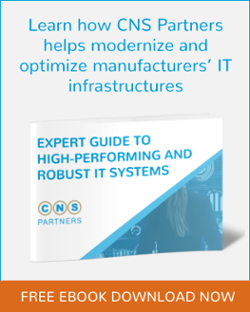Why IT System Reliability has a Direct Effect on Performance

When you’re putting together an IT system, it’s easier to focus on cost than reliability. The cost is printed in black and white, whereas reliability numbers are estimates. And while it’s clear what it means to your business’s bottom line to spend money on a new system, the benefits of reliability may seem more nebulous.
However, the true cost of having an unreliable system becomes clear when a system goes down. If the order entry system isn’t available and a customer wants to place an order, many employees will try their best to keep the business operating, handwriting orders and walking them to the control room for manufacturing operations. If their instructions aren’t clear – or even just if their handwriting is difficult to read – those in charge of the control room may misunderstand exactly what has been ordered.
And this is just the first opportunity for errors. When a key system goes down, most employees try to keep working by abandoning their usual processes to work around the problem. Error rates skyrocket. Products may come off the assembly line without the proper labels – and when no one can find the order later, it has to be remade. Expenses mount as the wrong products are manufactured.

It turns out that paying more up front for a system that will be reliable will likely save you money in the long run. But can you be sure you are choosing a reliable system?
Here are some tips for assessing your company’s needs and the products that will meet them to improve business operations
1) Don’t underestimate your company’s needs.
If your idea of what IT equipment should cost is based on advertisements for home systems, you may be shocked at the price tag for a business-class or enterprise-class system
But there is a reason these systems cost more. For example, in the case of network equipment, remember that most of your employees will connect more than one device to your network – and the network performance will slow as the wireless access points approach the maximum number of connections they can handle. Business- or enterprise-class equipment is designed to handle more connections. When businesses choose to purchase commodity switches and network appliances, they generally have lower performance and throughput than businesses expect
 2) Consider potential bottlenecks in every part of your IT system.
2) Consider potential bottlenecks in every part of your IT system.
Your IT system will only be as reliable as its weakest component
For example, low-cost switches may not only cause problems on the network, they can also make it difficult for IT technicians to gain visibility into the network. This means it will take longer for IT staff to troubleshoot network problems, no matter where those problems originate
It’s also important to be sure you are using the network components as designed. The design of a network switching infrastructure, for example, can make a huge difference in how well the network operates — minimizing switch hops will help preserve network performance.
3) Replace outdated equipment rather than waiting for it to fail
It may seem difficult to justify spending money on new IT equipment when you still have old equipment that is running. But there are two key reasons for not waiting too long. First, newer equipment will offer better performance and newer features that will make your business more efficient.
Even more important, older equipment is more likely to fail, causing an unplanned outage and a scramble to choose and install replacement components. It’s much better to replace equipment in a planned fashion, so you can warn users that the system will be temporarily unavailable and involve all the stakeholders in a careful decision about what new equipment to buy.
Ultimately, all users will gain from better performance and better reliability — and the business will benefit from having employees working efficiently on newer equipment, without the interruptions caused by unplanned downtime.
4) Refine your business’s processes.
Manufacturing operations that are well organized almost always have up-to-date IT systems as well. Clearly defined business processes and well-functioning IT systems go hand in hand, since you can’t create an IT system without knowing your business processes. Getting IT and system processes in order naturally enables smooth business operations. And having reliable IT systems helps ensure the business’s performance.
Worried about your IT system reliability? Learn about the downside of unreliable IT systems and how to recover quickly by downloading our new eBook, “Seven Key Factors for IT System Success” today.



